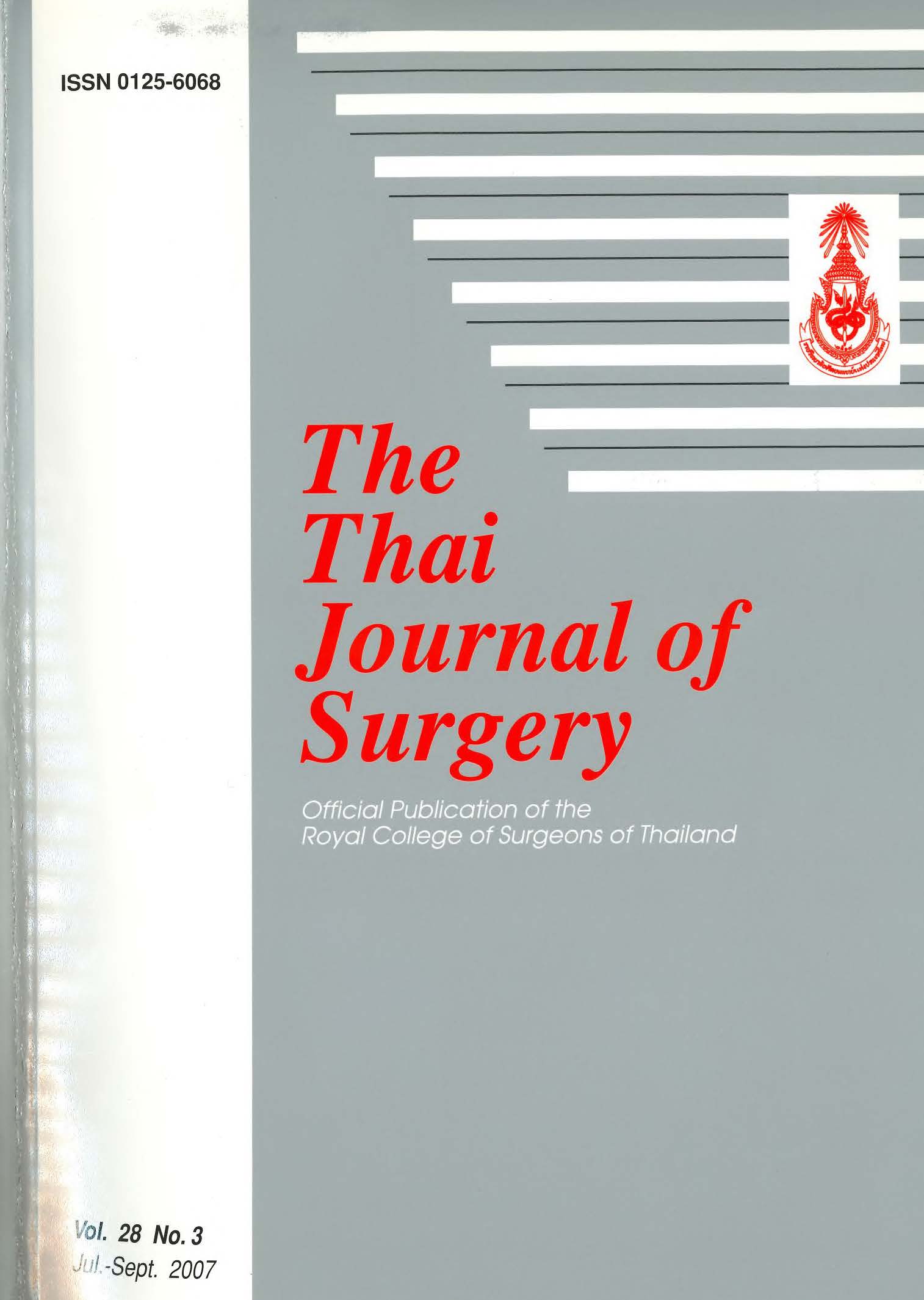Preliminary Results of Injury Surveillance at Viet Duc Hospital
Abstract
Purpose: Injury surveillance, a key to injury prevention, is the systematic collection, analysis, interpretation and dissemination of data on injury-related events for use in public health action to reduce morbidity and mortality and to improve health. The first injury surveillance was successfully implemented in a few pilot hospitals in Vietnam. Viet Duc Hospital, one of the leading centers of surgery and trauma in Vietnam, was one of these and has implemented an injury surveillance program.
Materials and Methods: Data were collected from all cases of injuries treated and admitted to Viet Duc Hospital, including death data. The surveillance was conducted during the period from 26 March 2006 to 26 October 2006.
Results: Data collected over 7 months in 2006 at Viet Duc Hospital showed 17,643 cases of injury treated in the emergency department, representing 70% of all emergencies. 989 patients died due to injury within 7 days, representing 5.6% of all injuries. Surveillance was conducted on 5,468 cases, in which men outnumbered women by a ratio of 3:1 and the highest proportion of patients were between 20 to 50 years of age. Patients referred from provinces accounted for 73% of cases. The highest categories of morbidity were among students and farmers who accounted for 22% and 25%. The largest numbers of injuries were to the head and face at 40%, second were to the extremities at 38%. Critical injuries accounted for only 2.6% of cases and serious injuries for only 3% based on Abbreviated Injury Scale (AIS) scaling. 30% received first aid at provincial hospitals and 23% at district hospitals. 38% of victims were transported by ambulance, 32% were accompanied by health workers. Traffic-related accidents accounted for 63% of all injuries, among which 74% of cases were from motorbike accidents. Motorbike drivers were injured in 70% of traffic cases. Only 5% of drivers were wearing helmets.
Conclusions: In order to prevent injury as well as to reduce the mortality rate, data on injuries should be collected accurately and completely. Despite the challenges of implementing the first surveillance of injury in a hospital, the results are successful and informative in determining the epid emiology of injury, and providing accurate morbidity and mortality data. The value of hospital trauma registry as a major research tool is increasingly recognized because of its role in improving care of trauma patients and bringing about better resource utilization.
References
2. Report on setting up the surveillance and plan to injury prevention for a period of 2006-2010. Workshop on implementing the surveillance system and plan action, Hanoi, Vietnam. Oct, 2005.
3. ADB report, 2003.
4. Health statistical year book, Vietnam, 2005.
5. Mallonee JM, Mallonee S, Injury surveillance, Epidemiol Rev 2003;25:24-42.
6. Champion HR, Sacco WJ, Carnazzo AJ, et al. A revision of the trauma score. J Trauma 1989;29:623-9.
7. Baker SP, O'neill B. The injury severity score: an update. J Trauma 1976;16:882-5.
8. Rob and Smith's. Pre-hospital trauma care and triage. Operative Surgery. Trauma Surgery. Part 1. 4th ed, p, 1-5.
9. The Medical Algorithms Project. Chapter 29, Trauma & Emergency Medicine. Section: Trauma and Injury Severity Score (TRISS) 2006-2007. Institute for Algorithmic Medicine, Houston, TX, USA.
10. Copes WS, Sacco WJ, Champion HR, Bain LW. Progress in Characterizing Anatomic Injury. In: Proceedings of the 33rd Annual Meeting of the Association for the Advancement of Automotive Medicine, Baltimore, MA, USA; 1990. p. 205-18.
11. Development of service system for injury patients by utilizing data from the trauma registry. Trauma and Critical Care Center, Khon Kaen Regional Hospital, Khon Kaen, Thailand. Report No. 75-2002-13.
12. World report on road traffic injury prevention. World Health Organization, Geneva. 2004: 8-9.
13. Smith JO. Difficulties in implementing the surveillance system. Workshop on results of implementation of surveillance system and plan action. Hanoi, Vietnam, October 2005.
14. Document on skill of injury surveillance. Ministry of Health, Vietnam, 2004.
15. Rutledge R. The goals, development, and use of trauma registries and trauma data sources in decision making in injury. Surg Clin North Am 1995;4:305-237.
16. Nguyen Duc Chinh. The pilot implementation of injury surveillance at Viet Duc Hospital, 2005. Workshop on implementing the surveillance system and plan action, Hanoi, Vietnam, October 2005.
17. Monthly reports of Viet Duc Hospital, Hanoi, Vietnam (one year of 2005 and first 6 months of 2006).
18. Sasser SM, Varghese M, Joshipura M, Kellermann A. Preventing death and disability through the timely provision of prehospital trauma care. Bull World Health Organ vol. 84 no. 7 Geneva July 2006.
19. Flavin MP, Dostaler SM, Simpson K, Brison RJ, Pickett W. Stages of development and injury patterns in the early years: a population-based analysis. BMC Public Health 2006;6:187.
20. Hoang Thi My Hanh, Pham Lan Tran, Vi Thi Ngoc Thuy. Costs of traumatic brain injury due to motorcycle accident at Viet Duc Hospital, Hanoi, Vietnam. The Master of Public Health degree at the University of Queensland, Australia, in collaboration with Health Strategy and Policy Institute, Vietnam. Brisbane. June 2006.
Downloads
Published
How to Cite
Issue
Section
License
Articles must be contributed solely to The Thai Journal of Surgery and when published become the property of the Royal College of Surgeons of Thailand. The Royal College of Surgeons of Thailand reserves copyright on all published materials and such materials may not be reproduced in any form without the written permission.



